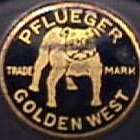There are 2 ways to fish inshore all winter - mullet are really big, 5-6" - one way is to fish big topwaters and suspending Corkys for a few large fish that will take them.
The second way is imitating tiny glass minnows, and fishing where they're concentrated in bait balls. Both daytime structure where they're focused by tide currents and wind currents, and night-time lights. The bait balls also concentrate gamefish, which will sip tiny lures. Often, you'll see the gamefish, and they ignore everything else you throw at them. Winter shrimp are also tiny, and also are drawn to lights at night.
Cold rain here over the weekend. Saturday, put a dozen tamales in the steamer to graze all day, and began arranging lure boxes for our Arroyo Colorado trip on the February new moon.
The arroyo in far south Texas, part of the Rio Grande delta, includes a dredged barge channel, one side lined with houses and dock lights. The schoolie male speckled trout that travel 20 mi/day to chase bait, sweep through here every night. Finesse and stealth will get you a limit every night, and they're all males. The dock piles stack up with snook, redfish are deep under the lights. Results from one night last winter, and 3 licensed fishers.
We've made this trip on 8 new moons, 6 winters in a row, so I know what works and why, and I've had time to put all this together. The trick to catching specs is getting multiple followers, so they will feed in competition. Even then, we've seen them in pairs, closed-mouth, pushing the natural bait on the surface to test it. While the fish come to us, it's anything but fish in a barrel. Change-up is important - stealth is especially important - they have 4 miles of lights to choose other than ours.
Plug box - this box doesn't glow. Blue is a primary color at night - pink becomes important under the lights because of transmitted light through glass minnow bodies.
Speckled trout will hit larger prismatic lures for slashing into a bait ball, but both redfish and snook are picky about individual bait size. The smallest are 38 mm Duo Ryuki S, and have been my most productive lure on winter snook. The smaller lures have hook swaps from micro-trebles to plug-single hooks, and fish best with BFS.
You look at the dock light structure as a bowl, with the bait "hiding" inside the light, and gamefish feeding from the dark. You target the edges of the light bowl. The largest lures are for dredging deeper in the channel, beneath the light bowl. There are also a couple of prop-tail topwaters, in case I hear a slurping snook in the nearby dark.
This is a dredging lure glow box for fishing under the light bowl. Flashy silhouette-glow and pattern-glow lures are especially effective. Solid glow works well enough casting into the dark beyond the lights. The larger plugs fish fine on ML to MH tackle.
The 3" clicking cigar corks are fished with a 4' leader for shrimp, either live if we can get it, or if we can't get live shrimp, the Nikko Okiami rigged for kicking evading shrimp - the plastic is made from krill. The lightweight cigar cork dropper rig fishes best with finesse spinning tackle.
This year, I'm adding metal micro-jigs - 3 to 5 g, down to 20 mm length. Most of these have pattern glow, cast like a bullet and flutter slowly to deep. Also glow micro-plugs in this box. Top left is a squarebill wake bait with soft glow - right below it is a bottom-bouncing soft glow plug.
You catch the snook against the dock piles outside of the lights. The small metal jigs on a matching all-range finesse rod are my best shot at an over-slot snook this year. Something else about the metal jigs, they are inexpensive, only $3 or so.
The boxes are Meiho 1200NS - 10" x 7" x 1", fully adjustable - they're amazing for arranging trip boxes, and take up very little space.
Also didn't show plastic bodies we'll rig as tandems on finesse spinning tackle. These include 2" weighted swim shad, and neutral-density suspending that you fish on a small worm hook without added weight.
A fly rod with sinking line, an intermediate slime line or Teeny sinking shooting head, small size 6 whistlers or hi-ties, also works well for change-up.











